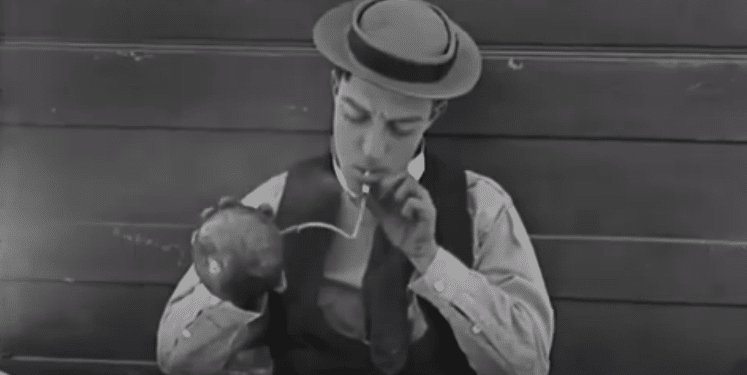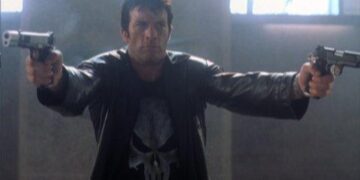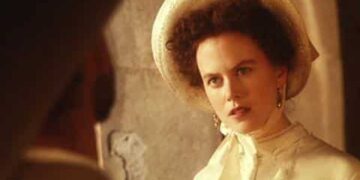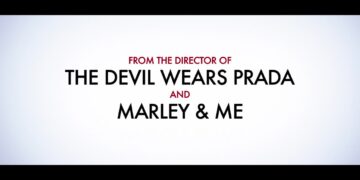Ella Cinders is a beloved American comic strip created by writer William M. Conselman and artist Charles Plumb.
First published in 1925, the comic quickly gained popularity and was adapted into a successful silent film in 1926.
The story, which is a modern and humorous take on the classic Cinderella tale, follows the life and adventures of a young girl named Ella Cinders who dreams of escaping her abusive and exploitative home life.
In this article, we will dive deep into the origins of the comic, explore its film adaptation, and discuss the enduring legacy of Ella Cinders in popular culture.
Comic Summary and Origins
The comic strip, which was syndicated by Metropolitan Newspaper Service, began its run on June 1, 1925, and continued until 1961.
The story revolves around Ella Cinders, a young girl who is forced to work as a servant for her cruel stepmother, Ma Cinders, and her two wicked stepsisters, Prissy and Lotta Pill.
Ella’s life takes a dramatic turn when she meets a handsome young man named Waite Lifter.
The two fall in love, and with the help of Ella’s Fairy Godfather, a mysterious and magical figure, she is able to overcome the obstacles created by her stepfamily and find happiness.
The comic strip was inspired by the 1922 Broadway play “Ella Cinders,” which was written by George S. Kaufman and Marc Connelly.
The play served as a satirical take on the classic Cinderella story, and the comic strip expanded on this theme, adding a modern twist to the age-old tale.
The Film Adaptation: Movie Summary and Parent Guide
The 1926 movie adaptation of Ella Cinders is a silent romantic comedy directed by Alfred E. Green and starring the talented Colleen Moore as the titular character.
The film follows the basic storyline of the comic, but with some alterations to suit the medium of film. For example, the Fairy Godfather character is replaced by a film director who helps Ella achieve her dreams of stardom.
The movie is a lighthearted and entertaining depiction of the classic Cinderella story, with a focus on humor, romance, and a touch of adventure.
The parent guide for this film would suggest that it is suitable for all ages, as it is a family-friendly story with no explicit content or language.
However, some of the humor and themes may be more appreciated by older children and adults who can understand the satirical nature of the story.
Exploring the Timeline: When Ella Cinders Takes Place
Ella Cinders takes place during the Roaring Twenties, a period of economic prosperity, social change, and cultural innovation in the United States.
This was a perfect setting for the comic and film, as it allowed the creators to explore contemporary themes and issues while also providing a visually stunning and vibrant backdrop for the story.
The flapper fashion, jazz music, and emerging film industry of the time period all played a significant role in shaping the world of Ella Cinders and contributed to its overall appeal.
The Magic of Film: Ella Cinders Film Locations
The film adaptation of Ella Cinders was shot primarily in Hollywood, California, with some exterior scenes filmed in nearby Pasadena.
This setting was an ideal choice for the story, as it allowed the filmmakers to capture the glamour and excitement of the burgeoning film industry at the time.
The iconic Hollywood sign, Grauman’s Chinese Theatre, and the Hollywood Walk of Fame all make appearances in the movie, adding to its charm and authenticity.
Who’s Who: The Characters and Their Significance
Ella Cinders is populated by a colorful cast of characters, each with their own unique traits and quirks.
In addition to the titular character, we have:
- Ma Cinders: Ella’s cruel and domineering stepmother, who forces her to work as a servant in her home. She represents the classic wicked stepmother archetype and serves as the primary antagonist of the story.
- Prissy and Lotta Pill: Ella’s shallow and selfish stepsisters, who delight in making her life miserable. They embody the wicked stepsisters trope and provide comic relief in the story.
- Waite Lifter: Ella’s love interest, a kind and handsome young man who helps Ella achieve her dreams. He symbolizes the traditional Prince Charming figure and serves as a foil to Ella’s stepfamily.
- The Fairy Godfather: A mysterious and magical figure who helps Ella transform her life and find happiness. He represents the classic fairy godmother archetype, with a modern twist.
These characters serve to both entertain and provide social commentary on the era in which the story takes place, offering a unique take on the familiar Cinderella tale.
Memorable Quotes from Ella Cinders
Ella Cinders is filled with witty dialogue and memorable one-liners that have stood the test of time.
Some standout quotes from the comic and film include:
- “You can’t keep a good girl down!” – Ella Cinders
- “I’m no Cinderella – I’m an Ella Cinder!” – Ella Cinders
- “Why, I’m just a poor little cinder girl.” – Ella Cinders
- “With a little bit of luck, even a Cinderella can go to the ball!” – Ella Cinders
- “I’ll show ’em! I’ll be a star!” – Ella Cinders
These quotes not only showcase the humor and wit of the story, but also convey the themes of determination, self-belief, and the importance of staying true to oneself.
Curiosities Surrounding Ella Cinders
Ella Cinders has generated a variety of curiosities and trivia over the years. Some interesting tidbits include:
- Colleen Moore, who played Ella in the film adaptation, was one of the highest-paid actresses of her time and a major silent film star. She was also known for her distinctive bob hairstyle, which became a fashion trend in the 1920s.
- In the comic strip, Ella eventually becomes a successful actress and marries Waite Lifter. The two go on to have a family, and the comic strip’s storyline evolves to focus on their life together.
- The original artwork for the Ella Cinders comic strip was drawn using a unique two-tone shading technique called “cinder shading,” which added depth and texture to the images.
Tips for Cosplay and Dressing Like the Characters
For fans of Ella Cinders who wish to cosplay or dress up as their favorite characters, here are some tips:
- For Ella, focus on flapper fashion, including drop-waist dresses, cloche hats, and T-strap shoes. Don’t forget her signature bob hairstyle and a smudge of cinder on her cheek for authenticity.
- For Ma Cinders and the stepsisters, look for vintage-inspired clothing with exaggerated silhouettes and bold patterns. Accessorize with feather boas, oversized jewelry, and dramatic makeup.
- For Waite Lifter, opt for a classic 1920s suit with a vest, pocket watch, and fedora. Complete the look with slicked-back hair and polished shoes.
- For the Fairy Godfather, choose a tuxedo or tailcoat with a top hat, gloves, and a walking cane. Add a touch of magic with a wand or other magical prop.
The Creators: William M. Conselman and Charles Plumb Bio and Works
William M. Conselman, born in 1896, was a prolific American screenwriter and comic strip writer. In addition to Ella Cinders, he is credited with writing over 50 films and several other comic strips, including “The Big Little Family” and “Good Time Guy.”
Conselman passed away in 1940, leaving behind a legacy of creative contributions to the world of film and comics.
Charles Plumb, born in 1899, was an American cartoonist and comic strip artist. He began his career as a staff artist for the Chicago Tribune before teaming up with Conselman to create Ella Cinders.
Plumb continued to draw the comic strip until his death in 1948, after which other artists carried on the strip until its end in 1961.
The Ending Explained: A Deeper Understanding
The ending of Ella Cinders sees our heroine achieving her dreams of stardom and finding true love with Waite Lifter.
This conclusion highlights the themes of perseverance, self-discovery, and staying true to oneself in the face of adversity.
It is a satisfying and uplifting ending that reinforces the notion that even in the most difficult circumstances, one can overcome obstacles and find happiness.
Remakes, Sequels, and Spin-offs: The Enduring Legacy of Ella Cinders
Although there have been no official remakes or sequels to the Ella Cinders film, the comic strip continued to be published for several decades after its initial release, with new artists and writers continuing the story of Ella and her family.
Additionally, the character of Ella Cinders has appeared in other media, such as comic book anthologies and fan art, and has inspired countless adaptations and reinterpretations of the Cinderella story in various forms.
Other Media by Alfred E. Green: Exploring the Director’s Works
Alfred E. Green, the director of the 1926 Ella Cinders film, had a long and successful career in Hollywood, directing over 100 films during his lifetime.
Some of his most notable works include “The Jolson Story,” “The Jackie Robinson Story,” and “Baby Face,” which starred Barbara Stanwyck.
Green’s films often showcased his ability to tell engaging stories and create memorable characters, a talent that is clearly evident in his work on Ella Cinders.
Similar Media to Ella Cinders: Recommendations for Fans
For fans of Ella Cinders who are interested in exploring similar media, there are plenty of options to choose from.
Some recommendations include:
- “Snow White” (1916): An early silent film adaptation of the classic fairy tale, with a focus on humor and whimsy.
- “It” (1927): A romantic comedy starring Clara Bow as a young woman who uses her charm and wit to win the heart of her employer.
- “The Artist” (2011): A modern silent film that pays homage to the golden age of Hollywood and explores the world of silent film stars.
Other Works by William M. Conselman and Charles Plumb
In addition to their collaboration on Ella Cinders, both Conselman and Plumb had successful careers in their respective fields.
Some other notable works by the duo include:
- “The Big Little Family”: A comic strip written by Conselman and illustrated by Plumb, which focused on the humorous adventures of a large family.
- “Good Time Guy”: Another comic strip collaboration between Conselman and Plumb, centered around the exploits of a fun-loving bachelor.
- “Love on the Run” (1936): A film written by Conselman, starring Joan Crawford and Clark Gable as a pair of star-crossed lovers on the run from the law.
Book Club Questions: Engaging with the Story
For those interested in discussing Ella Cinders in a book club or group setting, here are some questions to consider:
- How does Ella Cinders differ from the traditional Cinderella story, and what do these differences tell us about the time period in which it was created?
- What role does humor play in the story, and how does it contribute to the overall tone and message?
- How do the various characters in Ella Cinders embody different aspects of the Roaring Twenties, and what message do their individual stories convey?
- What themes and motifs can be found in both the comic strip and film adaptation of Ella Cinders, and how do these elements contribute to the story’s enduring appeal?
Ella Cinders in the Gaming World: Video Games Inspired by the Film
While there are no direct video game adaptations of Ella Cinders, the character and story have inspired various elements in other games.
For example, the classic game “Cinderella: The Video Game” released in 1991, features a similar storyline and characters, with players controlling Cinderella as she navigates her way through a series of challenges to attend the royal ball and win the heart of the prince.
Travel Guide to Visit Ella Cinders Locations: A Fan’s Pilgrimage
For fans who wish to visit the real-life locations featured in the Ella Cinders film, a trip to Hollywood, California, is in order.
Key sites to visit include the iconic Hollywood sign, Grauman’s Chinese Theatre, and the Hollywood Walk of Fame.
Additionally, the nearby city of Pasadena offers a glimpse into the historic architecture and scenic beauty that served as a backdrop for many of the film’s exterior scenes.
Conclusion: The Timeless Appeal of Ella Cinders
Ella Cinders remains a beloved and enduring piece of American popular culture, thanks to its unique twist on the classic Cinderella story, its memorable characters, and its vivid portrayal of the Roaring Twenties.
From the comic strip to the silent film and beyond, Ella Cinders continues to capture the hearts and imaginations of fans around the world, proving that “you can’t keep a good girl down.”














